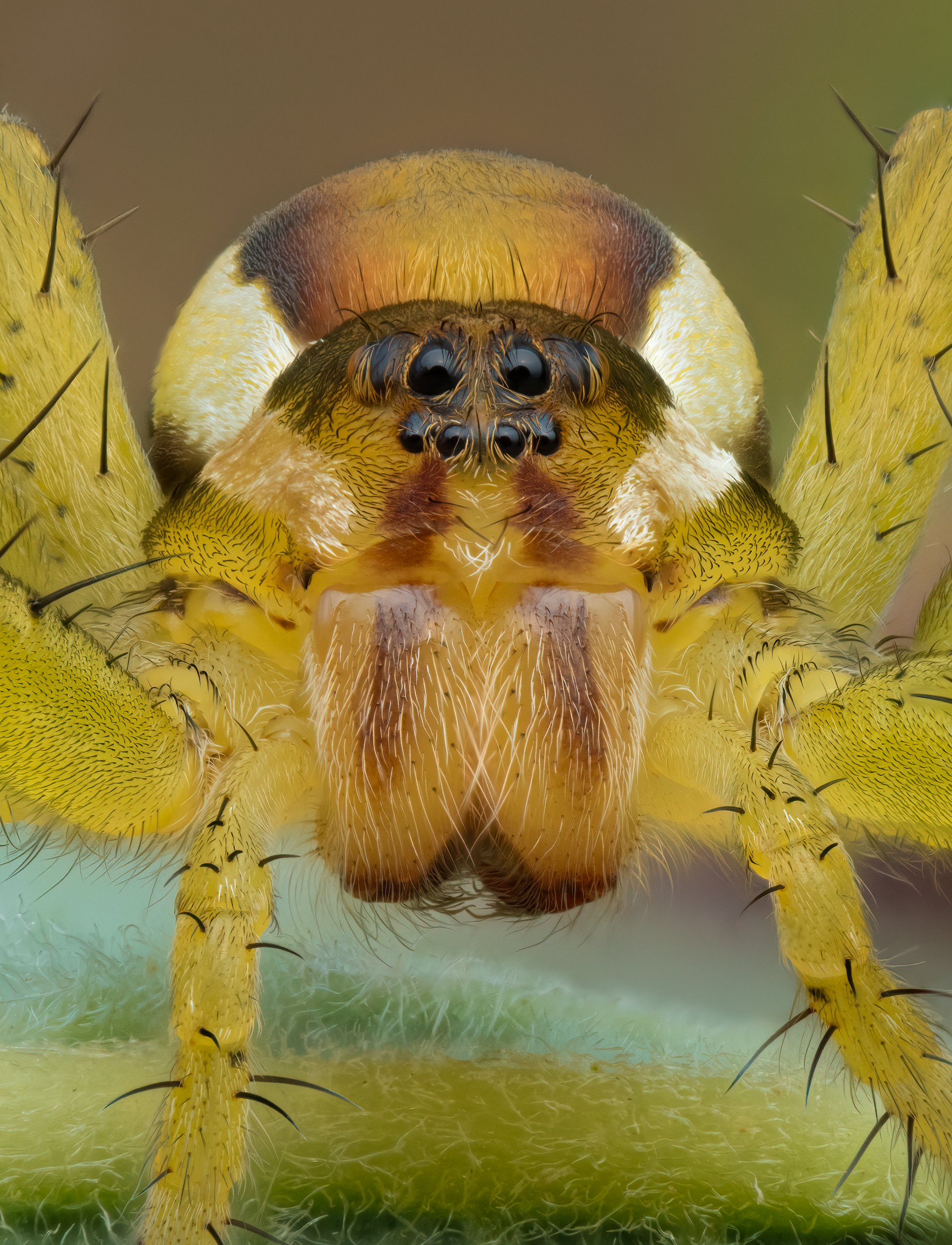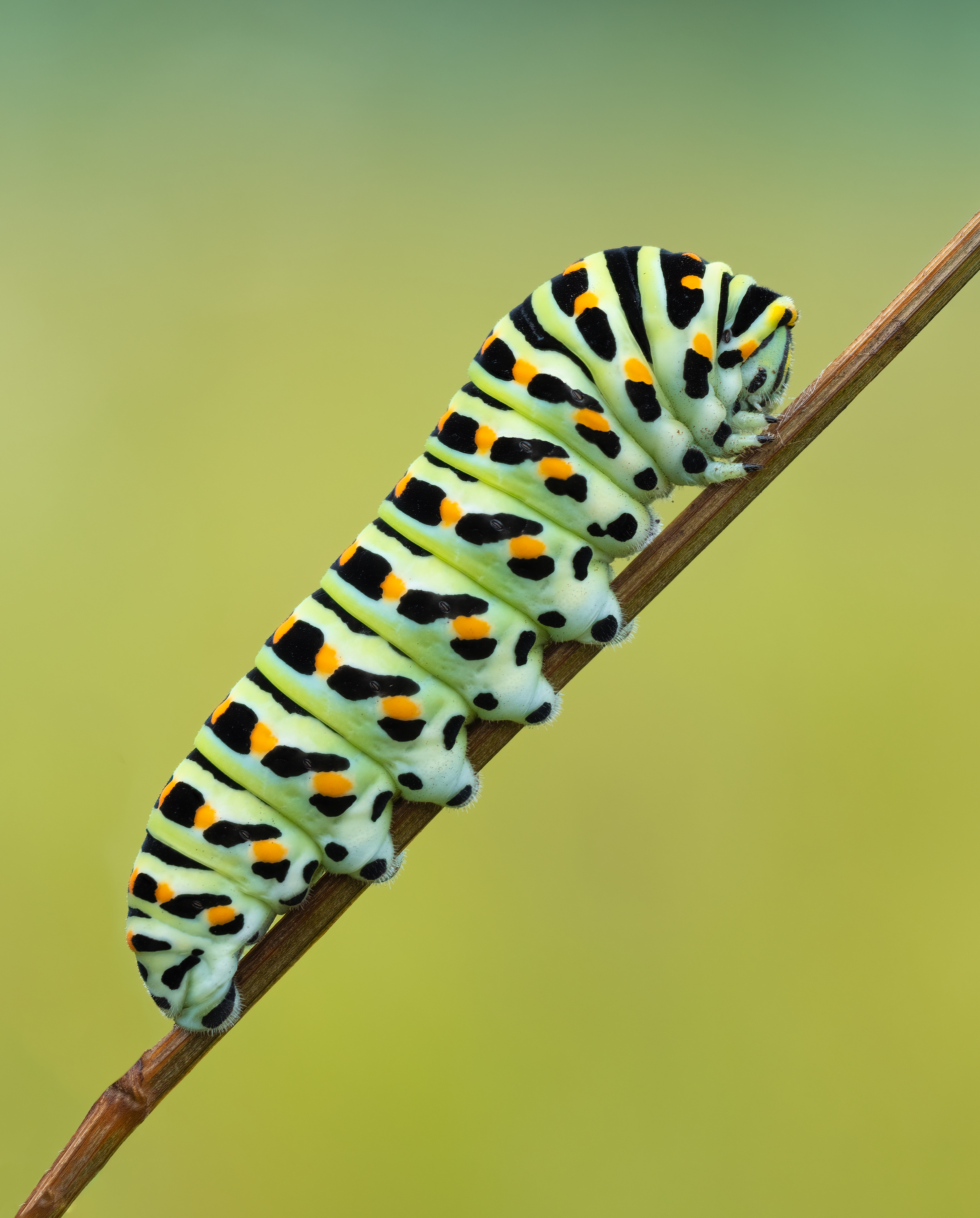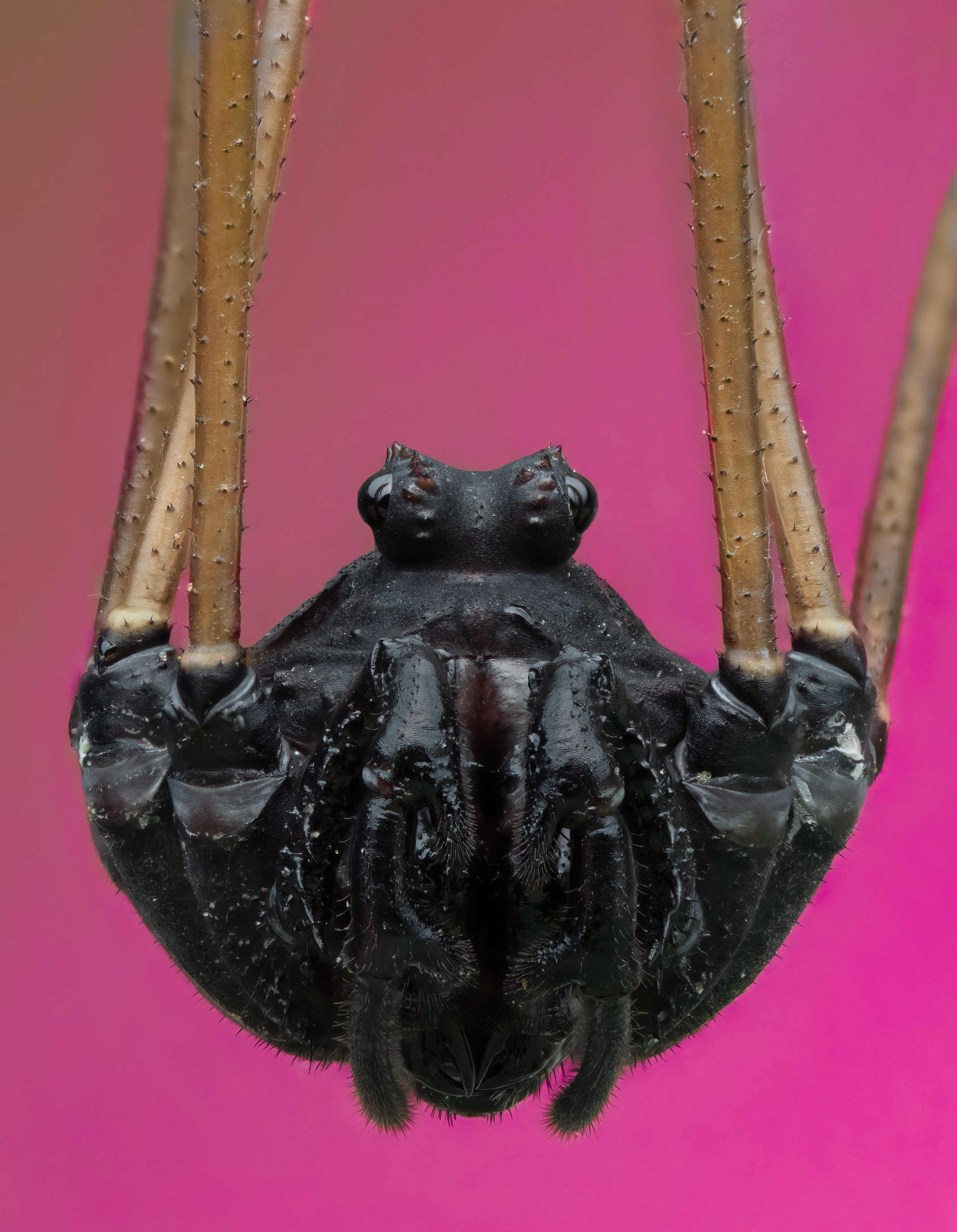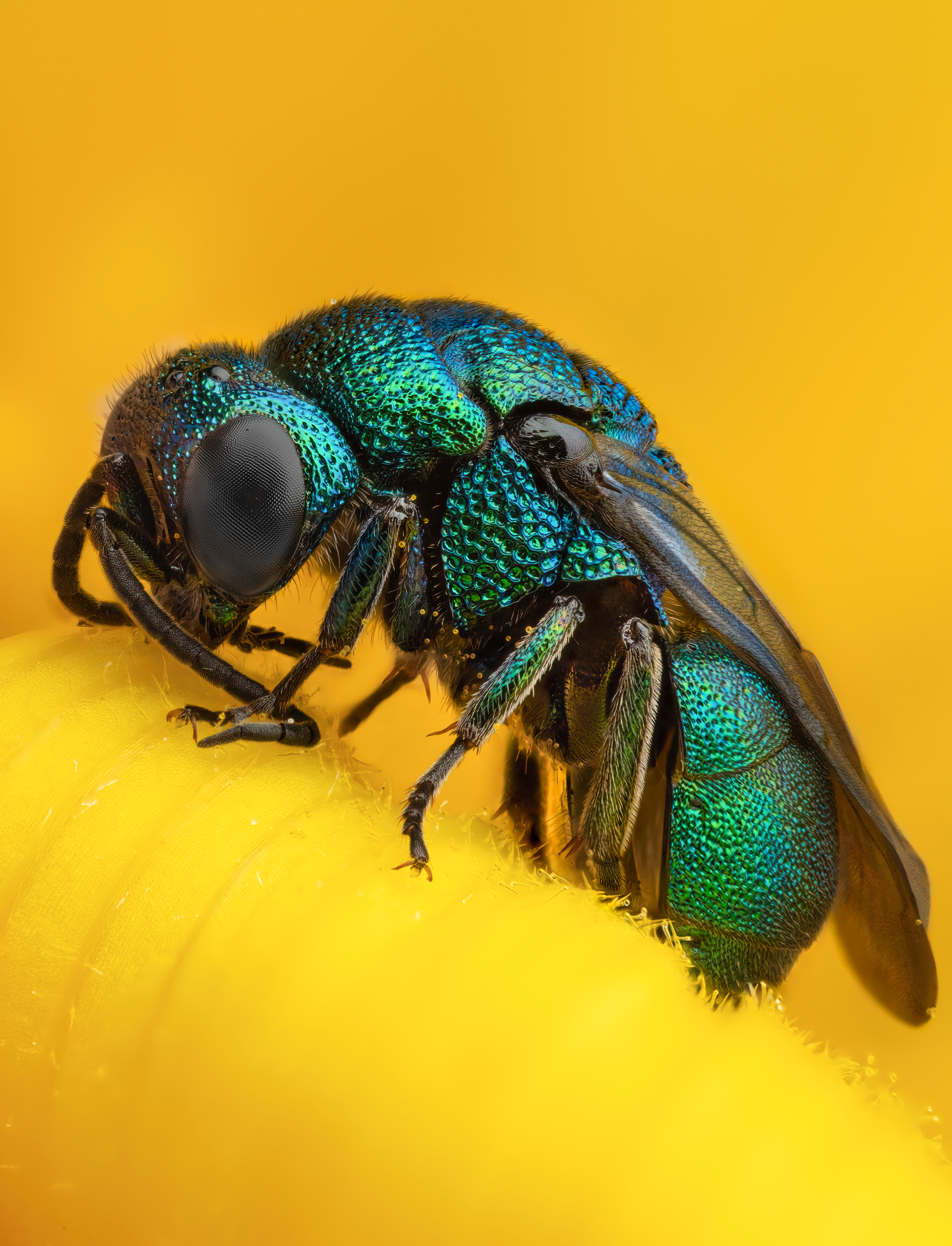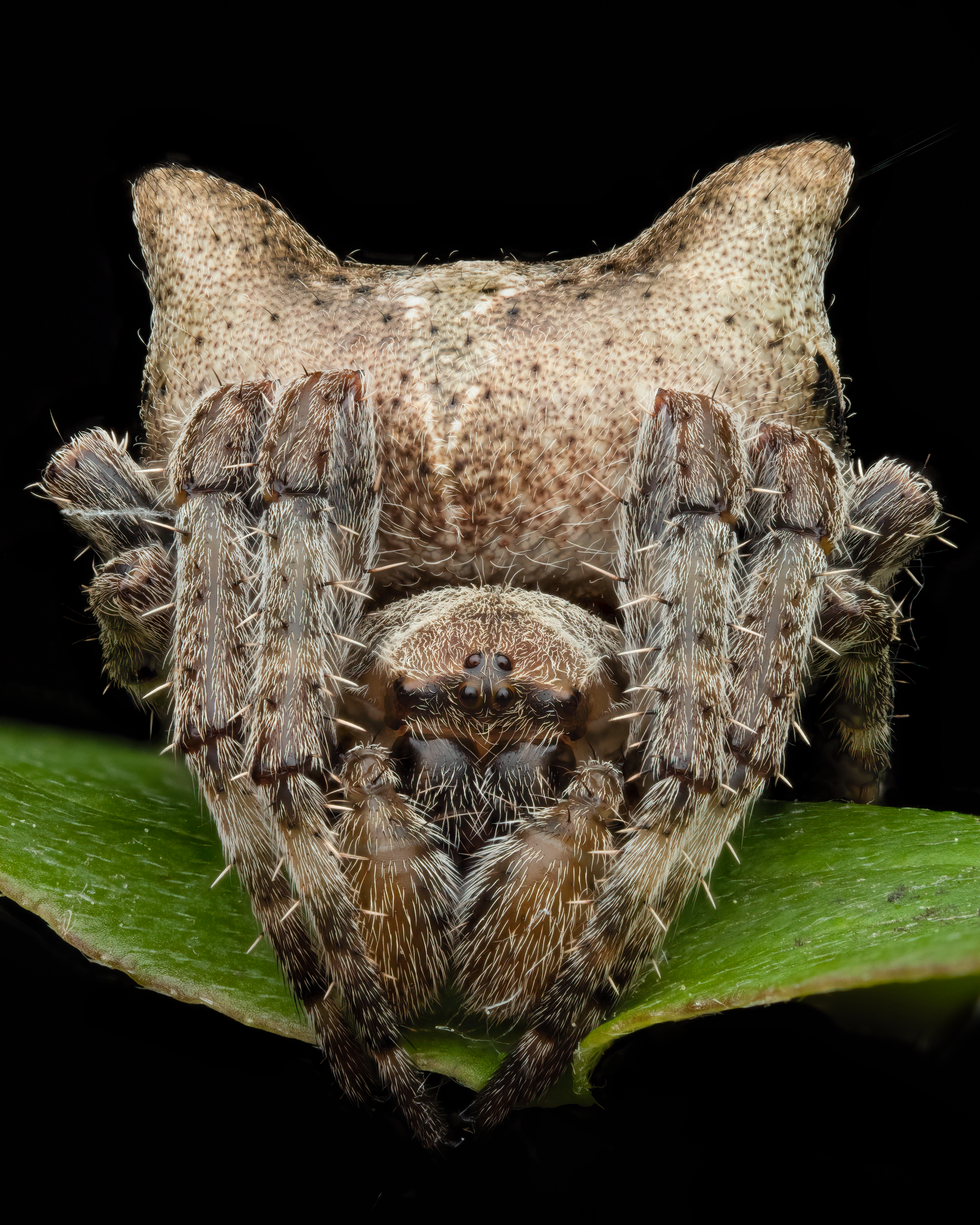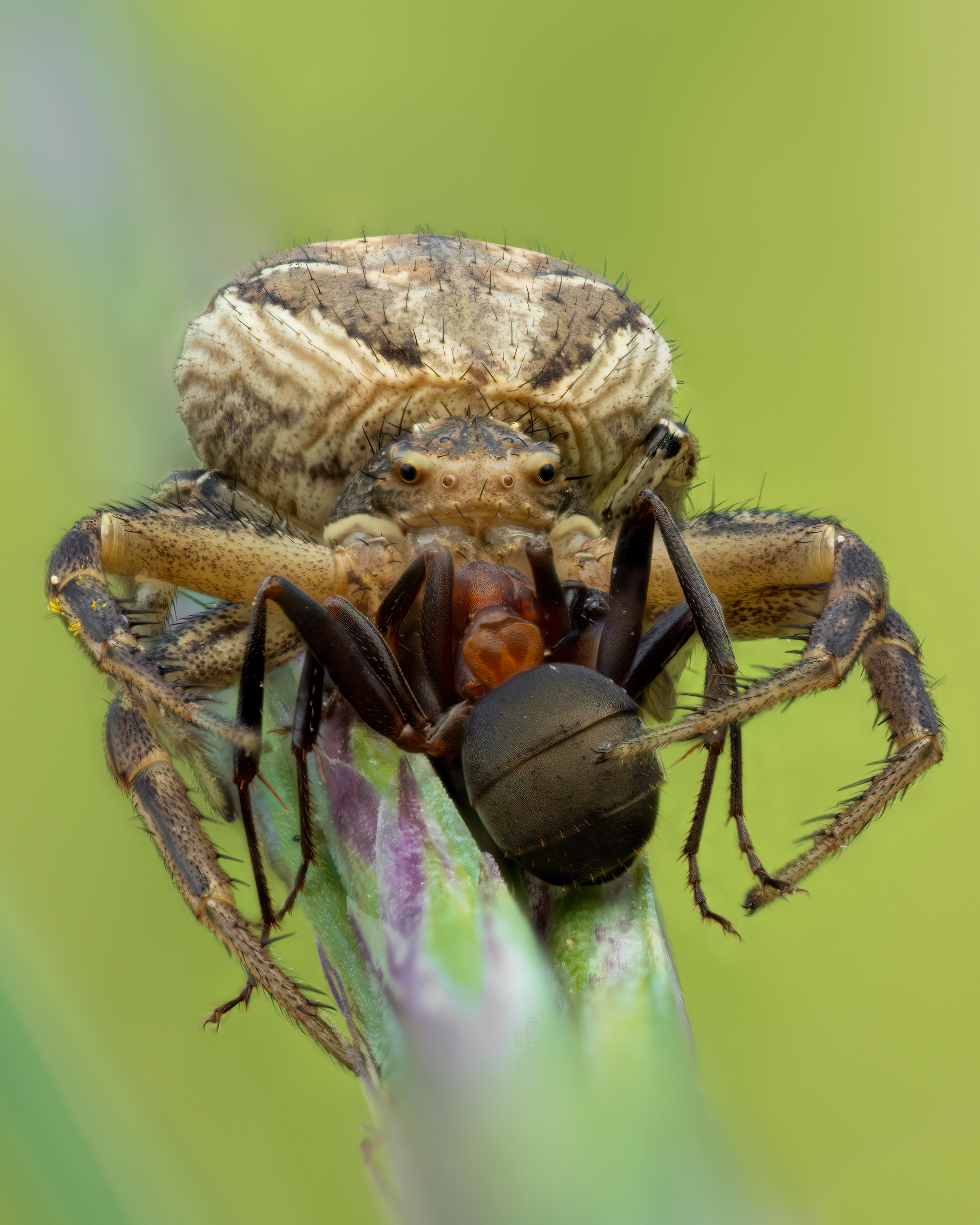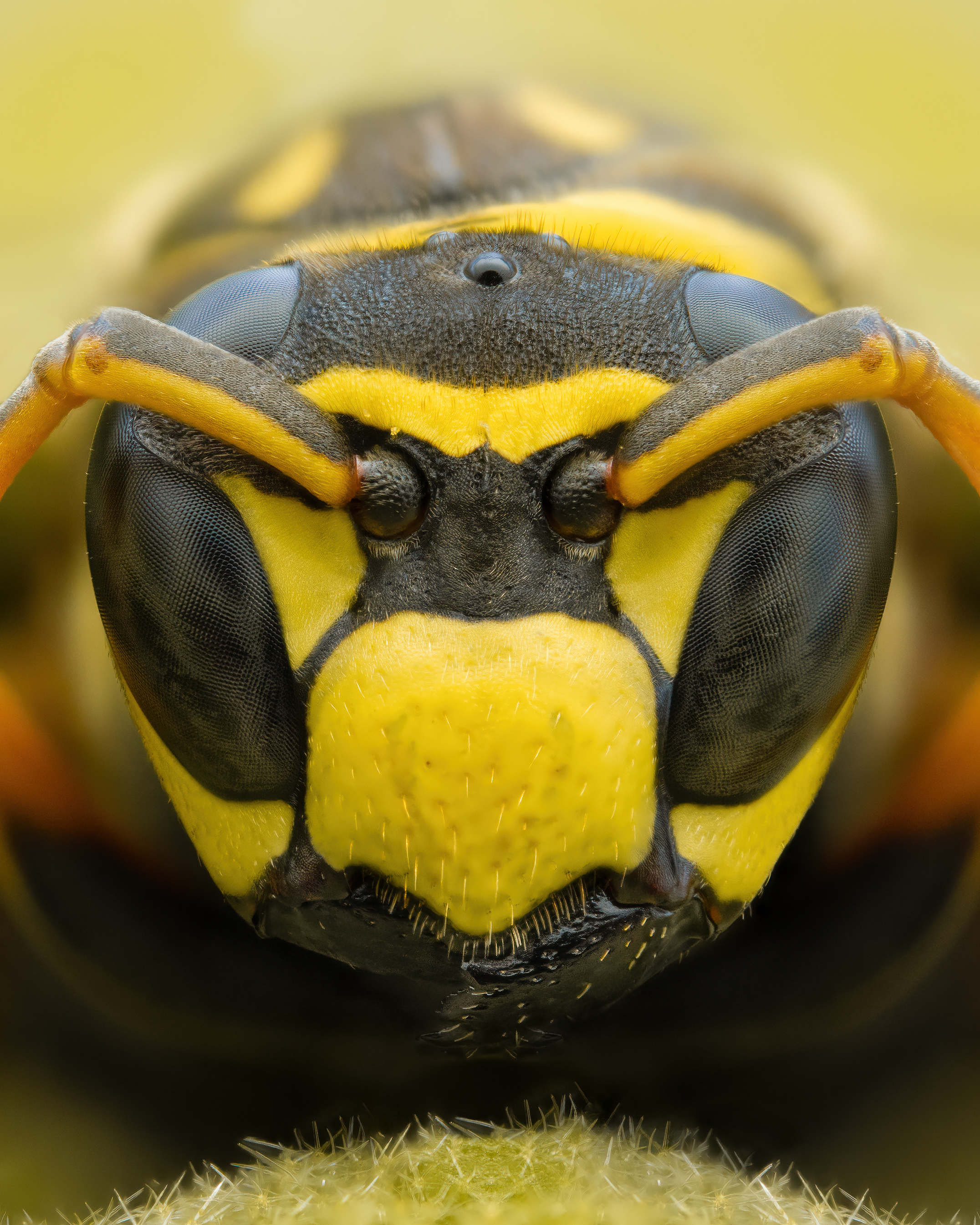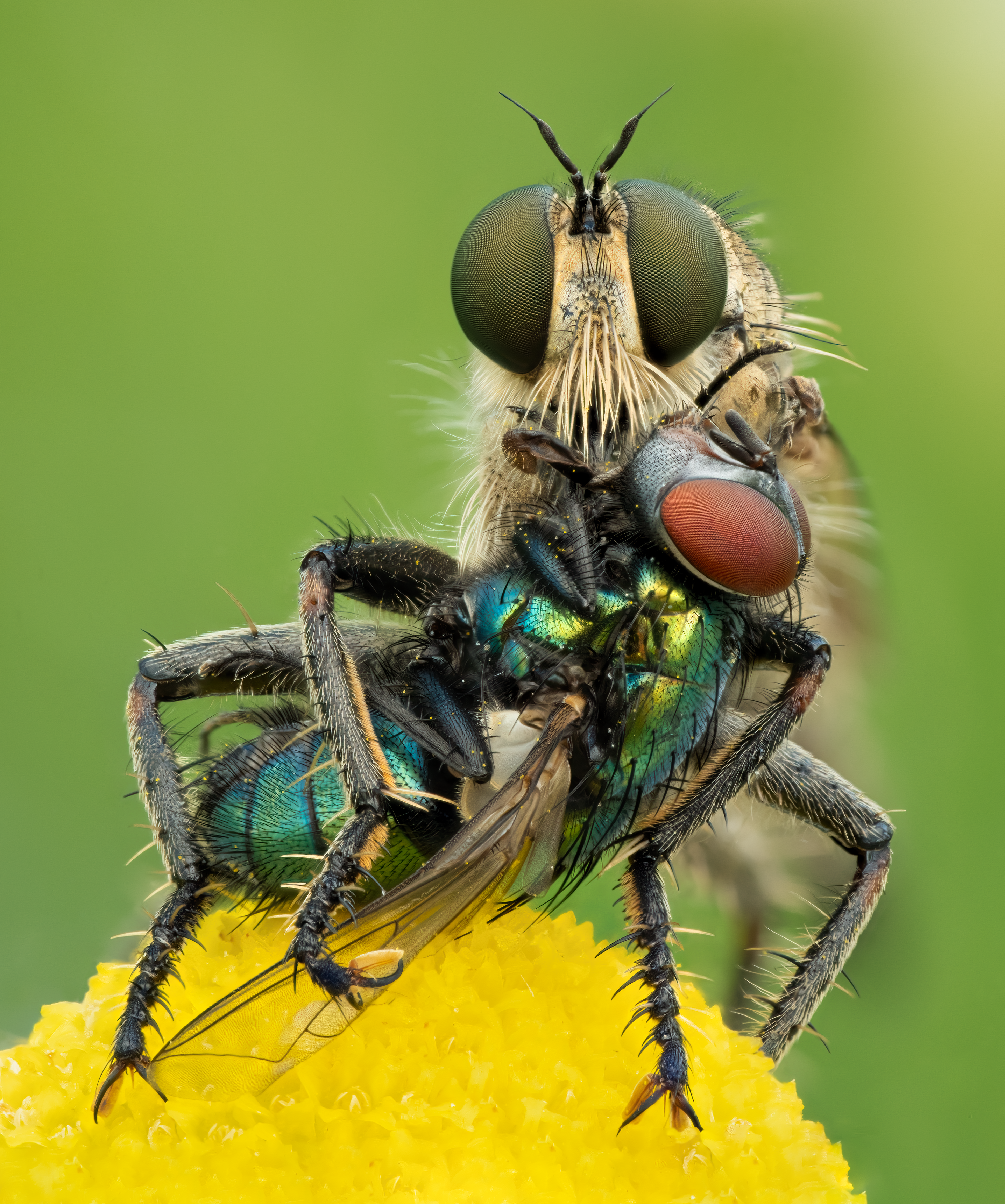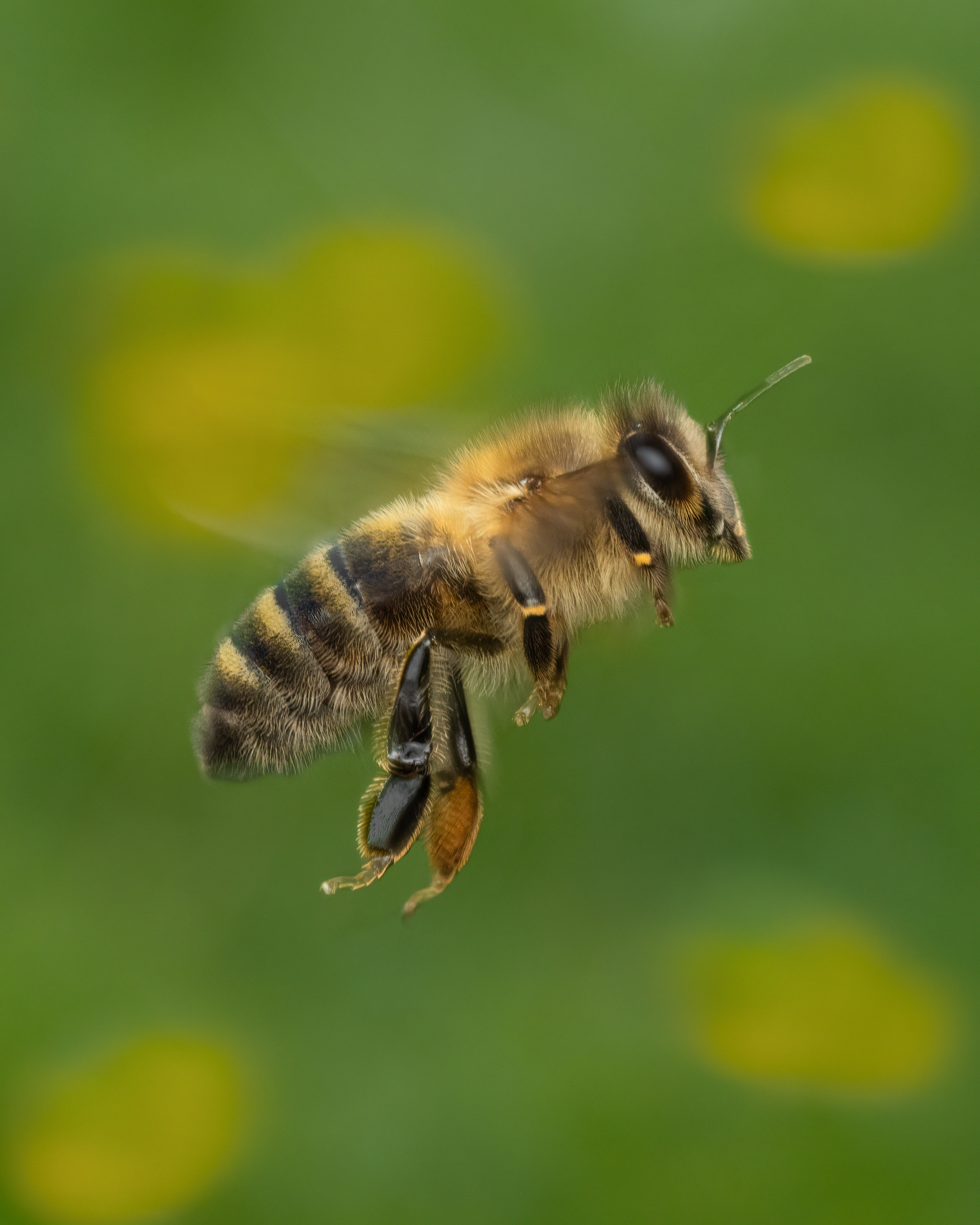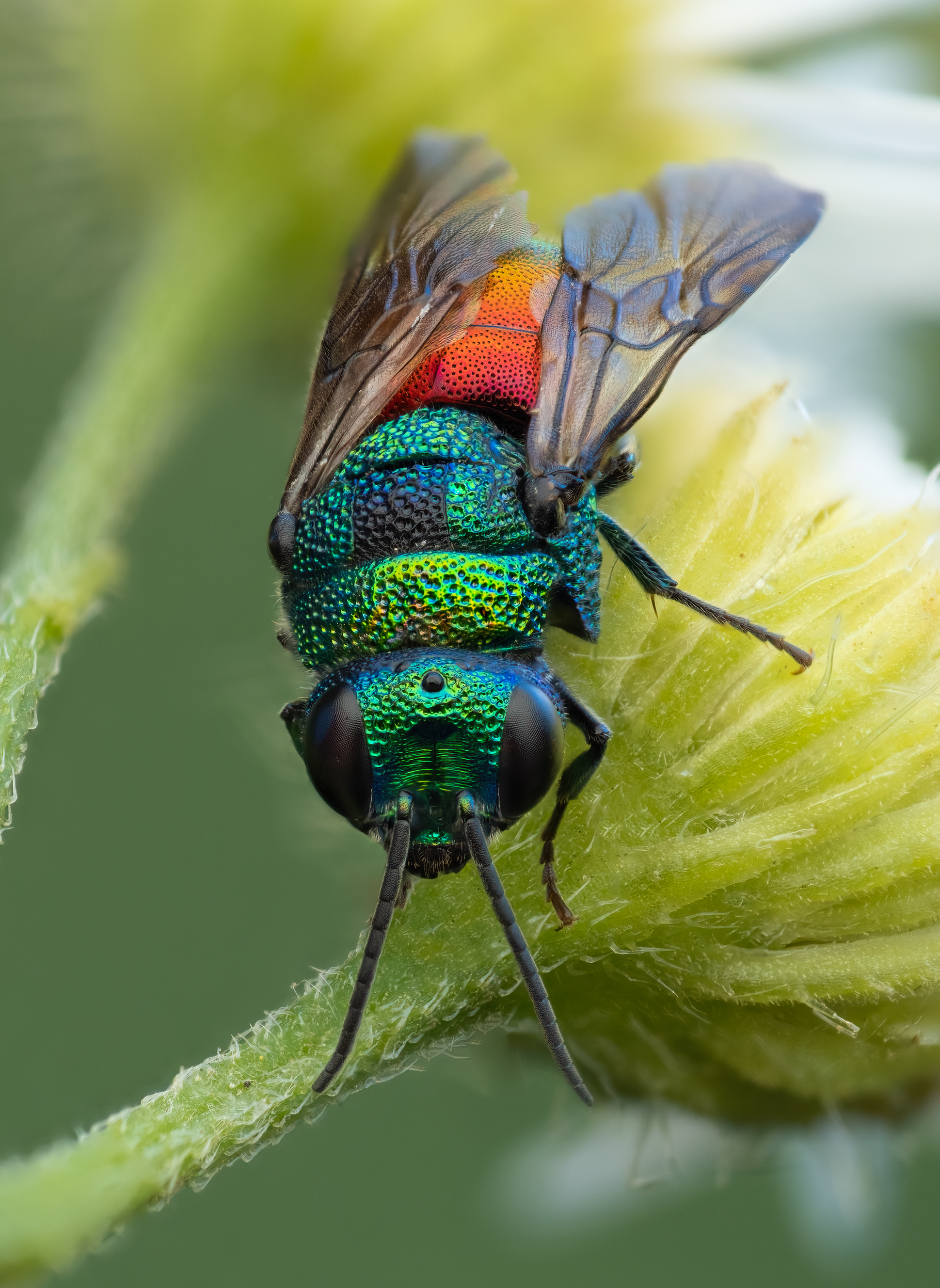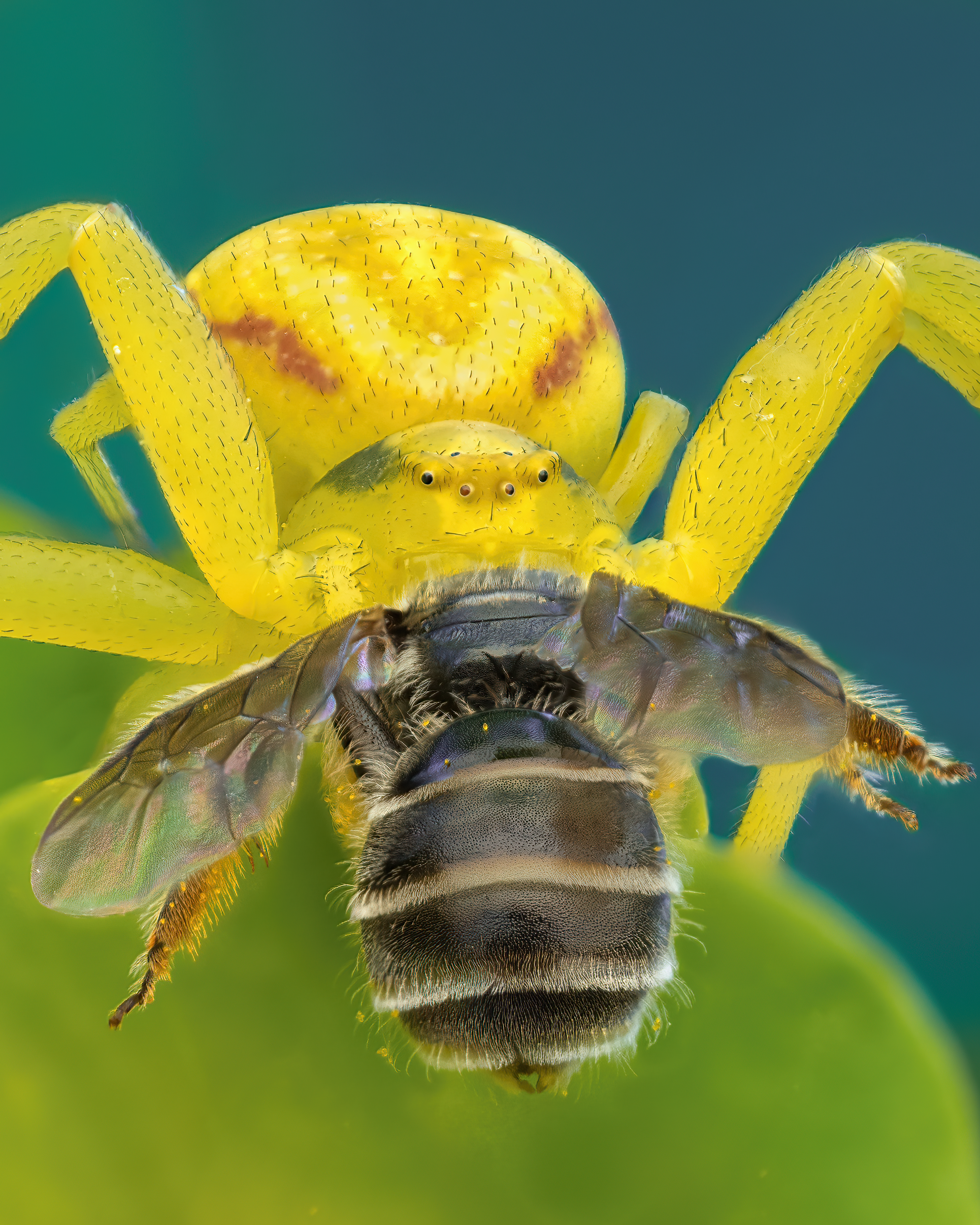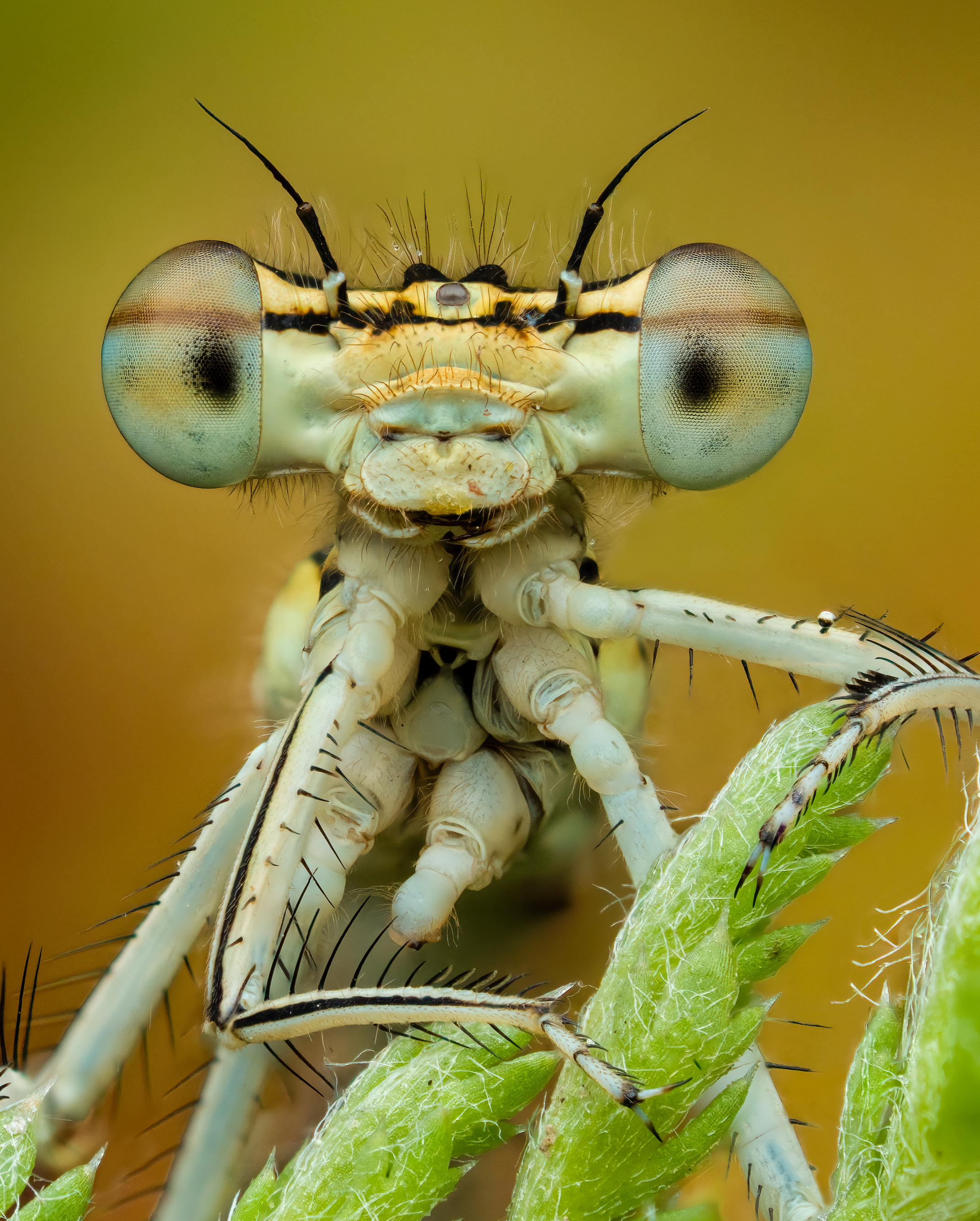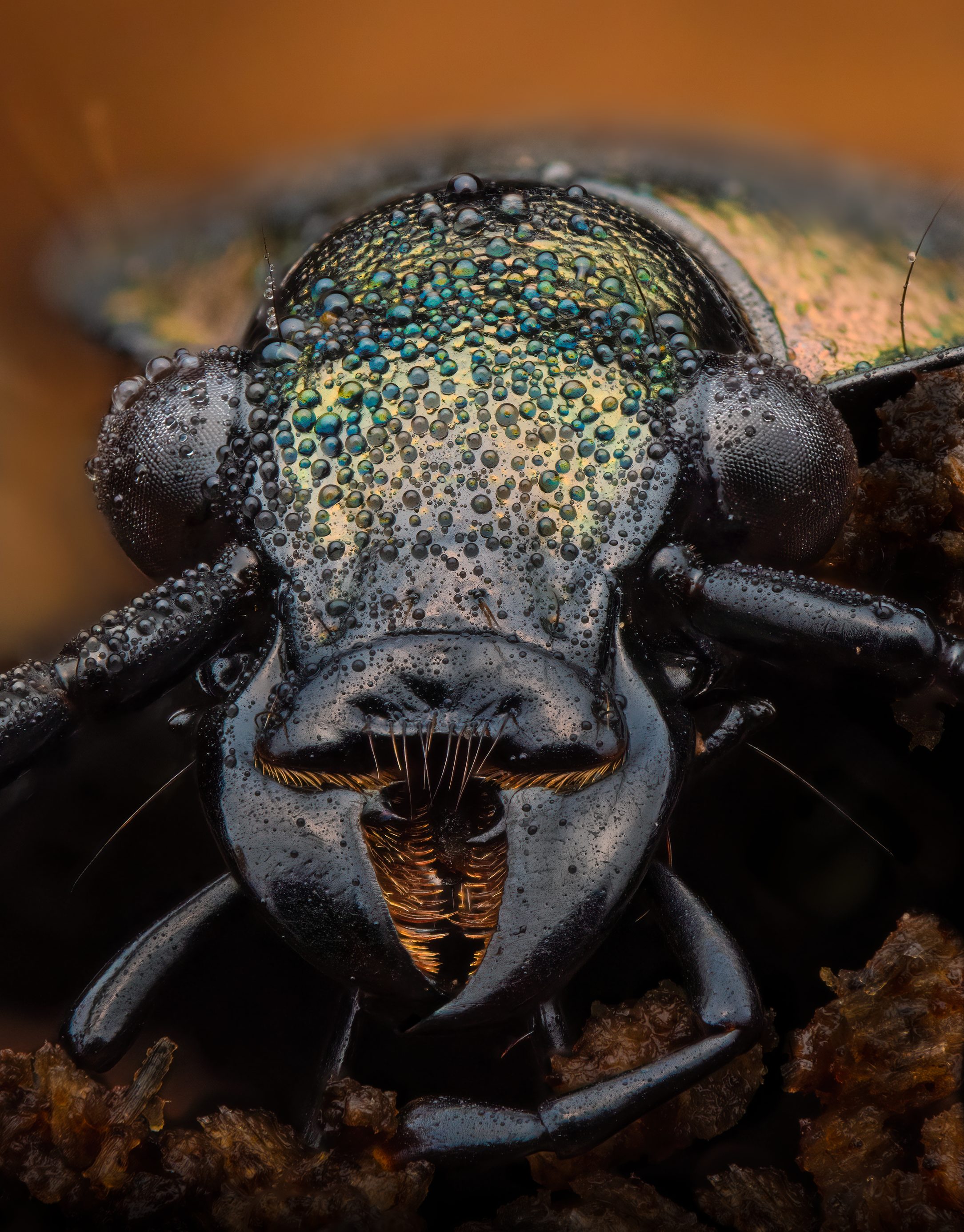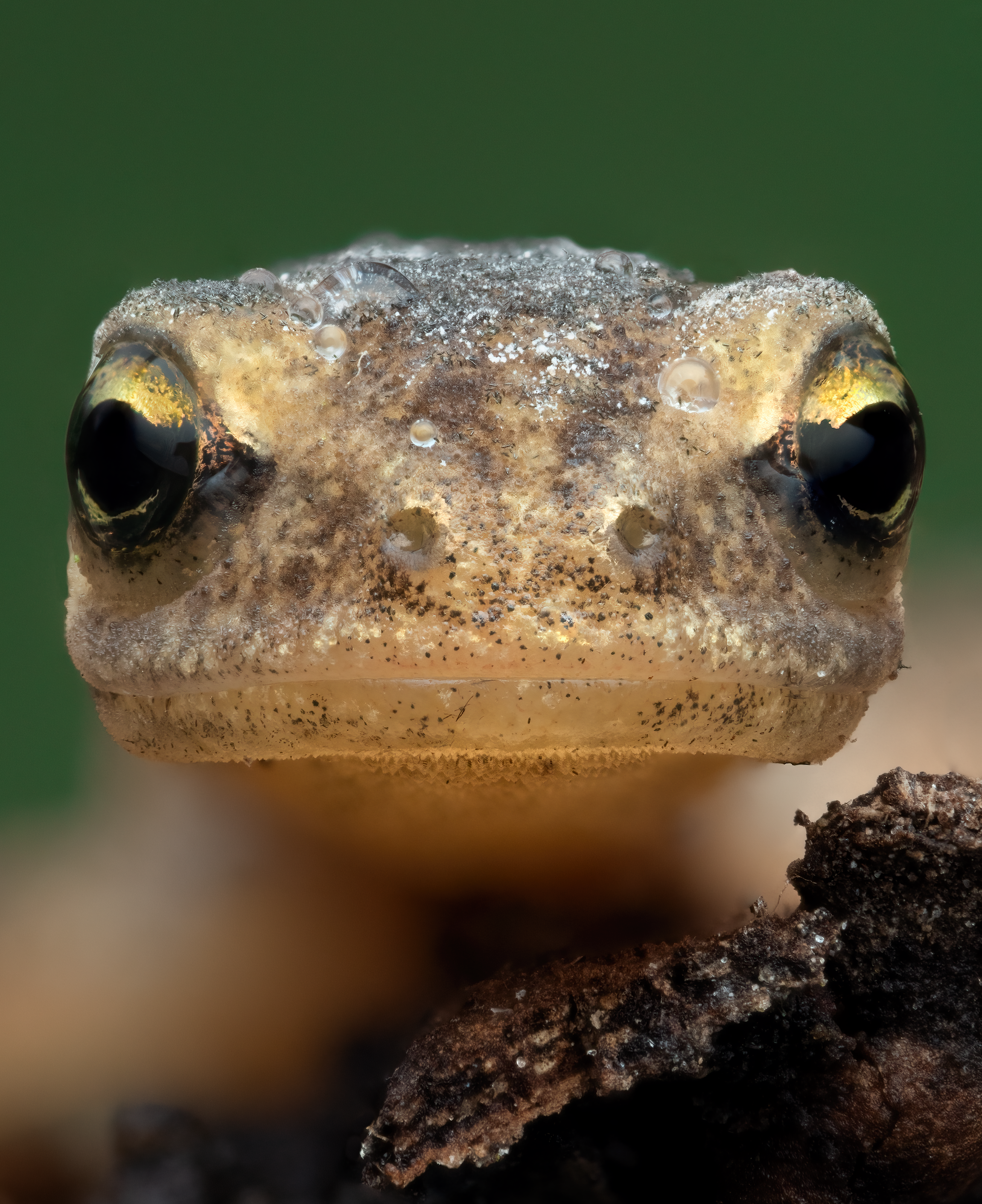placeholder
Dolomedes fimbriatus
The raft spider (Dolomedes fimbriatus) surely is an unusual one. It prefers to live on the banks of standing or flowing waters, in marshes and swamps, as well as in wet meadows.
As the name suggests, it lurks on the water surface preying for aquatic insects, tadpoles and even small fish. When hunting it moves skillfully on the water, staying afloat thanks to its dense body hair distributing its weight, thus not breaking surface tension. In case of danger or to catch prey, the spider is able to submerge. When doing so, an air bubble forms around its body, which bursts after surfacing, releasing a dry spider from the water.
This photo was taken at a lakeside in Bavaria, where I lifted this patient and calm spider with a leaf and propped myself up to take this handheld stack of 68 images to getting its whole body in focus.
Papilio machaon
I had a great short trip to southern Bavaria where i explored Central Europe’s biggest moorland ‘Murnauer Moos’ as well as a beautiful nature reserve at the ‘Osterseen’. I got out really early to have a chance to shoot the rare and endangered damsel- and dragonfly species these habitats have to offer, but had no luck due to lack of local knowledge and high temperatures.. On the second day I was lucky enough to find this stunning caterpillar of one of our most beautiful native butterflies as well as some other cool creatures you’ll get to see soon!
Platybunus pinetorum
Trichrysis cyanea
Members of the cuckoo wasp family (Chrysididae) truly are a treat for ones eyes. Their striking metallic colours can look almost surreal ranging across the rainbow in certain species. Like their namesake, they are parasitoid. Most of them parasitize on different wasps and solitary bees, laying multiple eggs into their host’s nest. After hatching, the wasp larvae first fight eachother, the remaining one then feeds on the host larvae as well as their food supply.
The small and extremely nimble wasps are particularly difficult to photograph, as they are rarely encountered in a calm state. On a cool, rainy summer day, I had the rare chance to capture this specimen retreating into a sunflower with a stack of 28 images.
Aranaeus angulatus
This distinctively shaped orb-weaver, probably of the species Araneus angulatus, constructs large orb webs, suspended from bushes and trees, often with support lines leading to the ground. Usually resting during daytime, it hunts at night, lurking in the centre of the web waiting for prey. As I was approaching its carefully built trap, the spider retreated to a leaf, giving me the chance to capture this stacked portrait of 34 images.
Misumena vatia
Crab spiders have extremely potent venom. They can paralyze prey way bigger than this ant within parts of a second. As the venom is adapted to be effective on other arthropods, it fortunately is quite usesuless against mammals like us.
Even though this genus of crab spiders contains 26 species in central Europe I assume it’s a 𝑿𝒚𝒔𝒕𝒊𝒄𝒖𝒔 𝒄𝒓𝒊𝒔𝒕𝒂𝒕𝒖𝒔 due to the pattern and their abundance. However, a safe determination would only be possible with a look at the sexual organs, that I obviously didn’t get.
Polistes dominula
Paper wasps are exceptionally peaceful. Their name comes from the characteristic nests that are built out of paper-like material. Together, the young queens build a new nest. Only later does one of them assert itself and become THE queen. While other Vespidae species build their nests practically exclusively in the wild, Polistes dominula also likes to nest under roofs or on houses
Machimus
What you see here is a robberfly – true assassins among the flies. My first encounter with a robber fly blew my mind. I saw a butterfly flying around peculiarly without flapping its wings. After it sat down, I realised it was a robber fly carrying its paralysed prey, a swallowtail. From exposed perches they start their short and fast hunting flights to catch insects in flight, equipped with a massive stinging proboscis and a poison that is deadly for their prey. In this case, the victim is a bottle fly whose body interior is transformed into a smoothie and pleasurably sucked up by the robber fly.
Apis mellifera
Capturing insects in flight can be a challenging task. It requires a combination of technical knowledge, persistance, and a fair amount of luck. The first common technique when going for such an image, is using high shutterspeed of 1/1600 or above in combination with high ISO values. Another option is using an external flash which is capable of freezing the subject’s movement. For this image, I chose the latter method in combination with a diffuser to soften the light. In fact many macro photographers default to such a setup, as it provides a powerful, consistent light source which is particularly necessary at high magnification.
The subject depicted is a common honeybee (Apis mellifera) on its way to collect pollen for the colony, photographed infront of a bee hive where the chances of success were maximized.
Chrysis ignata
I photographed this gorgeous cuckoo wasp, possibly a rather common 𝒄𝒉𝒓𝒚𝒔𝒊𝒔 𝒊𝒈𝒏𝒂𝒕𝒂, in early July in my mother’s garden. As it was about to rain it tucked in under this flower, barely moving, which gave me the incredibly rare opportunity of firing off a stack that resulted in this image.
𝒄𝒉𝒓𝒚𝒔𝒊𝒔 𝒊𝒈𝒏𝒂𝒕𝒂 is the most common cuckoo wasp species in Austria, although scientists are gathering evidence that there are several different species “hiding” behind this taxon.
Misumena vatia
The flower crab spider is found throughout Europe and has long been known for its striking colouration. The females can actively change their body colour and be white, yellow or greenish in colour, a perfect method of camouflage when hunting for their prey, like this solitary bee that got caught trying to collect some nectar off the wood spurge (𝑬𝒖𝒑𝒉𝒐𝒓𝒃𝒊𝒂 𝒂𝒎𝒚𝒈𝒅𝒂𝒍𝒐𝒊𝒅𝒆𝒔) the crabby was lingering on.
Platycnemis pennipes
One of my favourite pictures ever taken! This expressive young female white-legged damselfly (Platycnemis pennipes) was photographed in June during a night walk in Vienna’s Donauauen National Park. My goal on that trip was to find dragonflies and damselflies, which are much easier to photograph at night, as the temperatures cool down making them mostly immobile. I found it resting on some leaves on the ground, barely moving, and decided to pick a multi-coloured euphorbia blossom to get these colourful shades in the background. To obtain a more detailed image, I laid down on the ground and used the focus bracketing feature on my Olympus OM-D EM-1 Mark III to take a handheld focus stack of 35 images.
Myopa tessellatipennes
These flies, which are around from April to May, undergo an alienesque reproduction cycle! 👽. After successful fertilization, the females sit in ambush, always looking for a potential host to which she can attach an egg. Hosts are usually bees, bumblebees and wasps. Once the fly has identified a host, she rushes to it, skillfully attaching an egg to its body mid flight. The larva hatches shortly afterwards and bores into the host’s body between the abdominal segments. The host is slowly eaten from the inside, but dies shortly before the parasitoid larva is ready to pupate. With an inflatable frontal bladder, the hatching fly destroys the pupal case and hatches to repeat the cycle.
Chrysopidae
The lacewing is known as an especially beneficial insect because its carnivorous larvae consume vast quantities of aphids, giving them the name “aphid lions”.
Another funfact about them: A reaction to ultrasound has been observed in adult lacewings. As soon as lacewings perceive ultrasonic signals, they put their wings to their bodies and drop to the ground. This allows them to escape bats that locate their prey at night by ultrasound. Also lacewings communicate with each other by vibrating with their abdomen. In doing so, the abdomen touches the ground, usually a leaf.
When going for detailed portraits I often tend to use light rain to my advantage as many insects retreat into flowers and onto stems. There they remain until the weather improves, offering the perfect opportunity for a juicy stack with a colourful background like this daffodil. Since this specimen just started to move again, the stack turned out quite a mess. It required some hours of work but it’s always great to see it pay off in the end.
Carabus granulatus
This image shows a dew-covered ground beetle (Carabus granulatus) I found on a trip to the danube river floodplains near Vienna. They come in multiple different colours ranging from a dark brown to a metallic moss green. This nocturnal species, typically found in forests and fields, often spends the cold season in groups hibernating in tree stumps or deadwood. That is where I found and captured this specimen with a focus stack of 50 images.
Triturus vulgaris
As this little newt was in a calm state when i found it, I tried stacking it which didn’t seem to bother the little fella at all!
This “smooth newt” is in terrestrial plumage at this time of year. In spring, it is not found on land, as it is busy courting, mating and laying eggs in its ponds. After the females carefully wrap the fertilised eggs individually with their feet in the leaves of water and marsh plants, the adults spend the rest of the year on land.

